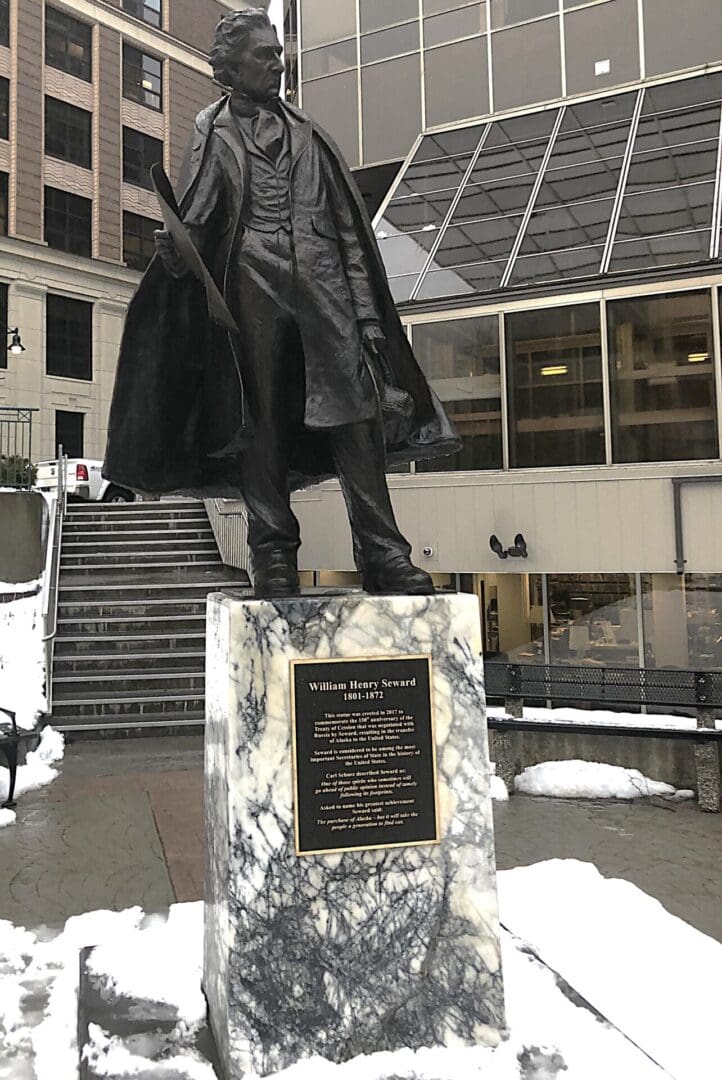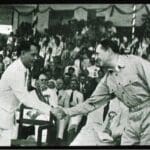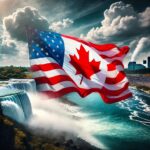Should Canadians seek US Asylum from THEIR Government…

As residents of then-territory of the United States, Alaskans had to jump through a lot of hoops to show we were adequately capable of self-governance before qualifying as a USA state. It finally happened in January of 1959.
DONN LISTON has witnessed Alaska’s decline over 60 winters and provides this fair warning should Canadians consider a similar fate.

As an Independent Alaskan Journalist and award-winning teacher, Liston has written extensively about failed AK institutions SINCE STATEHOOD, including law enforcement, courts, health & social services and public education. In accordance with our constitution Alaskans around the state elect public officials who are sequestered in Backwater Juneau 90-120 days per year to cavort with special interests. The result has been a steady decline in quality of governance, record budgets for a voracious bureaucracy, lack of accountability and lost opportunity for those who expect to live here long-term.

[1] Citizen’s guide to Alaska’s Constitution.
The AK State Motto is summed up by a bar called Chilkoot Charlies in the Spenard Subdivision of Anchorage:
We Cheat the Other Guy and Pass the Savings onto YOU!

See Professional Resume of DONN LISTON in References.
Alaska’s Geopolitical Place

[2] Why Alaska and the Arctic are Critical to the National Security of the United States, Col. Michael J. Forsyth, U.S. Army, Military Review Journal, Jan-Feb 2018
Alaskans Earned Statehood and THEN what Happened?
The world has changed dramatically since Alaska earned statehood and soon thereafter became rich beyond our wildest imaginations with North Slope Oil development since the late 1970s. Pres. Donald Trump has recently proposed making Canada the 51st state of USA for many of the same strategic and tactical reasons as former WWII General and President, Dwight Eisenhower, had for admitting as states Alaska (49) and Hawaii (50).
Canada should have to EARN statehood, too.
The Whole Country as One State?

Alaskans had schemed and dreamed of statehood using a mechanism previously used to admit Tennessee. Politically, Alaska was then wall-to-wall Democrats. Republican Eisenhower was not so keen on admitting it with that balance of voters, but a deal was struck to also simultaneously admit wall-to-wall Republican Territory Hawaii.

Since then, Alaska has grown in Strategic Significance

Forbes reports:
While Trump’s aggressive approach and bombastic rhetoric may be quickly dismissed, it is worth understanding why the United States is expressing such bold geopolitical ambitions. The reasons are a compilation of economics, national security, and global power.
The main prize would be the Arctic. Nearly 40% of Canada’s land mass is considered Arctic. By integrating Canada, the U.S. could strengthen its dominance in global trade and Arctic geopolitics. This move would counterbalance the growing Russian and Chinese presence in the Arctic while securing control over critical shipping routes.
[3] Why Trump Wants Greenland And Canada: Strategic And Economic Goals, Garth Friesen, Forbes January 26, 2025
Another Consideration
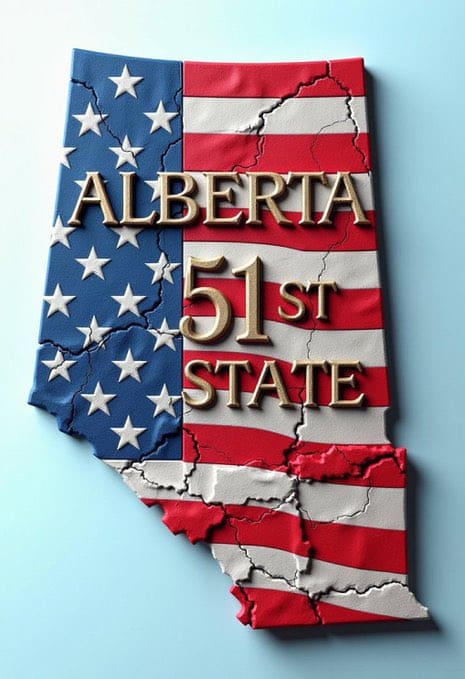
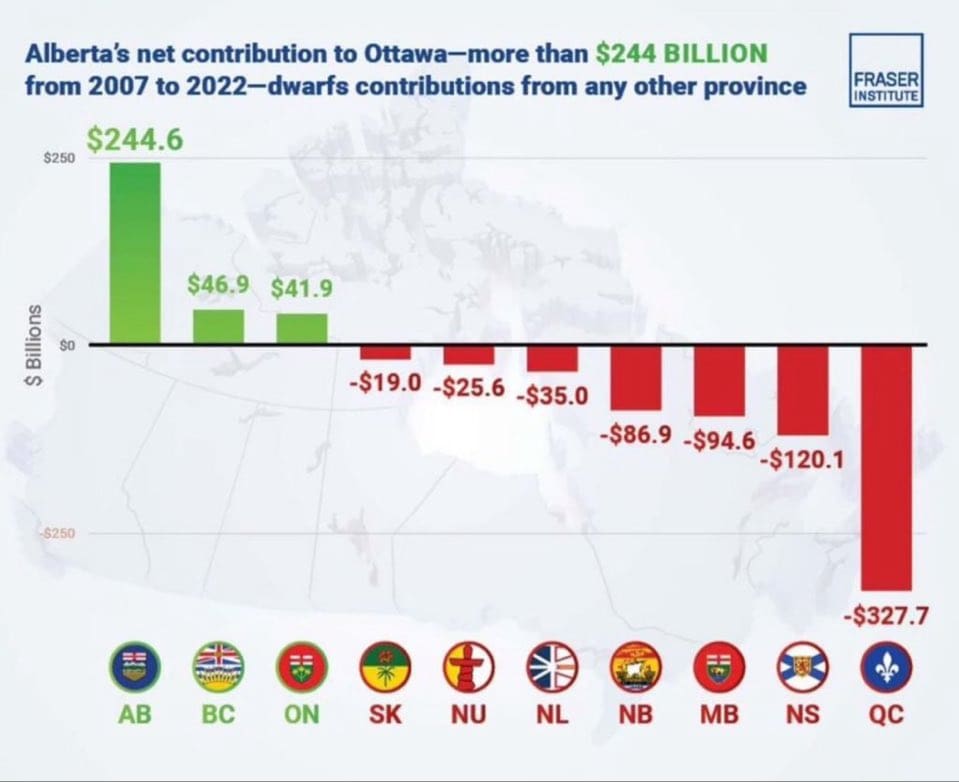
USA’s Checkered Colonial Past
Upon purchase of Alaska in April of 1867 USA immediately turned it over to the U.S. Army to govern after having conducted the transfer ceremonies at the original Capital of Sitka. Between 1867 and 1877, the Army tried primarily to suppress the sale of liquor to Natives and protect Natives from non-Native abuse.
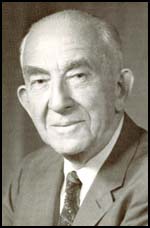
[4] Antonson and Hanable,
Alaska’s Heritage, P 279 Alaskans and the United States
Alaska was a far-away neglected outpost of the United States

Elected US Senator Ernest Gruening characterized Alaskan history before statehood as being one of neglect by the federal government. He labels the period of 1867 to 1884 as The Era of Total Neglect; 1884 to 1898 as The Era of Flagrant Neglect, 1988 to 1912 The Era of Mild but Unenlightened Interest; and finally, the period from 1912 to 1933 as The Era of Indifference and unconcern.”
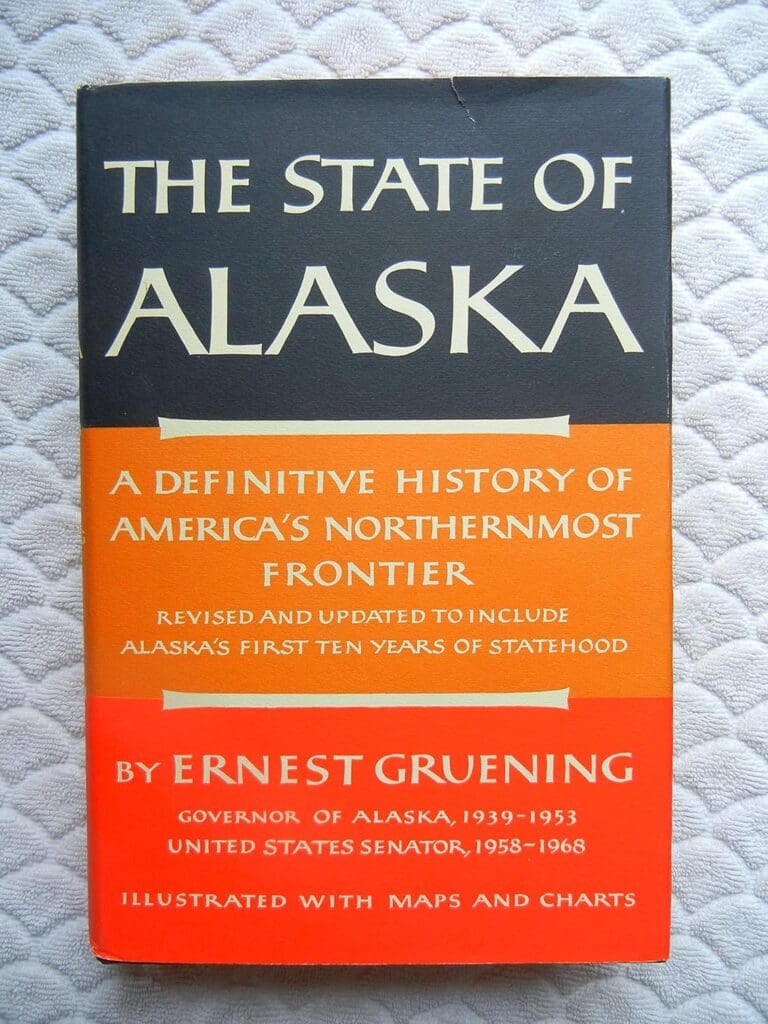
[5] Gruening, The State of Alaska

[6] Sen. Mike Gravel, Congress.gov
Alaska has always served as a National Security outpost of USA, dubbed by one author: Top Cover for America.
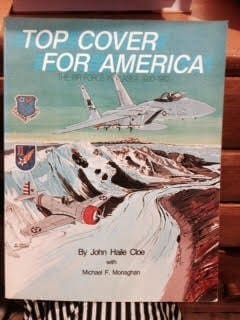
[7] Top Cover for America, John Hale Cloe, January 1, 1987


From a previous story:
Those of the so-called “baby-boomer generation” who had lived in Alaska during this time understood that our new state was a potential target of the soviets due to its strategic military significance. In my own case, my father brought his family to Alaska specifically so he could work as a civilian contractor in this international drama. We lived in Anchorage while Dad traveled around the state with his work as a telecommunications technician.
[8] Nike Site Reflections from the Cold War, DONN LISTON July 27, 2017
US Takeover of Alaska after Purchase from Russia
The US Army left Alaska in 1877. Governance of the sparsely populated US possession was turned over to the Treasury Department. Having a fleet of armed revenue cutters patrolling the coast of Alaska, this agency was determined to be more suited to enforce laws in a land where most transportation was by water. Also, army leaders believed that civil administration was better done by civilians.
The US Navy Department became the dominant federal agency in Alaska under President Chester A. Arthur, until 1884. The Navy improved its ability to keep peace in Alaska by appointing Native leaders as police.

During the early 1880s Alaskans began efforts to obtain Alaska-wide self-government. On July 4, 1881, Juneau residents called for a delegate to the US Congress to work for Alaska legislation. Several other Southeast towns joined Juneau in this quest–and actually sent a delegate–but Congress rejected him. These efforts renewed interest in Alaska and Congress established a civilian government for the territory in 1884. Under this First Organic Act a district governor and court system were established.
President Arthur appointed the governor and court officials, including a district judge, court clerk, attorney, marshal, four deputy marshals, and four commissioners who could act as judges on minor matters. The First Organic Act also applied the laws of the State of Oregon to Alaska “so far as they may be applicable.” A federal land office was also opened at Sitka to administer a land district for all of Alaska.
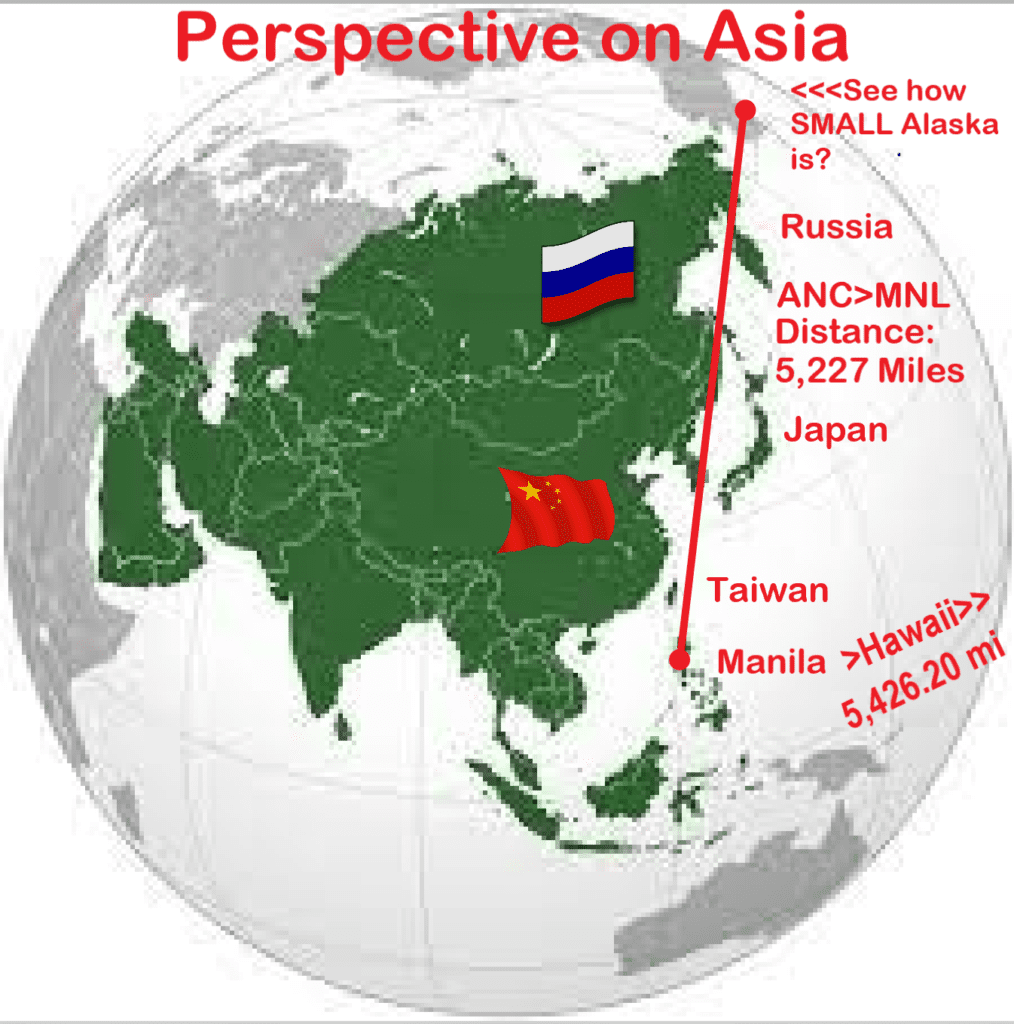
United States’ seizure of the Philippines in the late 19th century is often seen as an extension of Manifest Destiny—the assertion that the U.S. had a mission to civilize the North American continent and beyond Alaska.
[9] Manifest Destiny, Continued: McKinley Defends U.S. Expansionism
USA had acquired Philippines following the Spanish-American War but the Filipino people aspired to be independent instead of a part of USA.
From a previous story:
The first Republican Constitution in Asia–called the Malolos Constitution–was drafted and adopted by the first Philippine Republic and lasted from 1899 to 1901 under a revolutionary government. This constitution acknowledged that sovereignty resided solely in the Filipino people. Other notable provisions included: A call for a system of free and compulsory education, a new fiscal and tax system, the foundation of a navy and reorganized army and establishment of a diplomatic corps. Malolos delegates were eager to show that they were capable of running the country
During American Occupation of Philippines, the country was governed by the laws of the United States in a manner similar to other territories prior to statehood. And, Organic Acts passed by the US Congress included the first pledge of independence for Philippines while serving as the law of the land from 1902-1935.
[10] How USA Exploited Philippines’ Wish for Independence, DONN LISTON, June 6, 2023
Gold had been discovered in the Canadian Klondike. Beginning July 17, 1897 The Great Gold Rush attracted worldwide attention, causing the first true exploration of Alaska and the Yukon by outsiders since its acquisition from Russia in 1867. From the early 1880s to the eve of World War I gold discoveries stretched from the Bering Sea to the Canadian Interior and from the Gulf of Alaska to the Brooks Range. While a few individuals “struck it rich,” most of the gold strikes did not meet the miners’ dreams of riches.
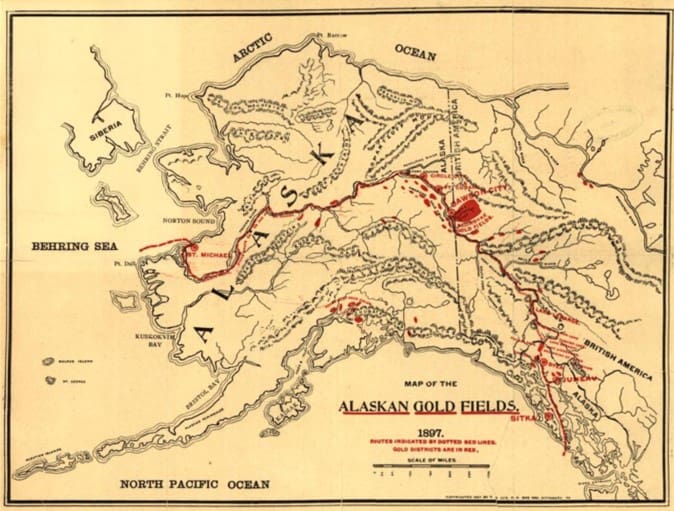
[11] The Stampede North: The Alaska Gold Rushes, 1897-1904
Territorial Status in 1912
The circumstances of the District of Alaska being a colony of the United States set the stage for Alaska Territory status.
The Second Organic Act in 1912 established Alaska as a Territory–rather than a district–and authorized Alaska to have its own legislature. This was the first time Alaskans had any say in laws passed to govern them.
[12] 37 U.S. Stats. at Large, 512
(1912)
The legislature consisted of a Senate and a House of Representatives with members of both bodies to be elected by Alaskan voters. This legislature had 24 members–two senators and four representatives from each of the four previously established judicial districts. It convened for the first time in March of 1913.

During the mid-1930s Congress repealed the prohibition on liquor importation, provided some considerations for Alaska Natives wronged by the government, and allowed local governments to have limited powers of taxation to pay for public facilities such as schools, streets and water projects.

[13] 100 Years of Alaska Legislature, Legislative Affairs Agency
The legislature was also expanded in 1945 providing two additional senators from each judicial district and redistributed representatives in proportion to the population of each district.
Outside commercial interests continued to control Alaska. These mostly resource extraction companies did not want to pay additional taxes to support the territory. Thus, having an inadequate tax base presented a barrier to self-determination. A tax study in the late 1930s initiated by Gov. John W. Troy was completed by Gov. Gruening, who then developed a tax reform plan. A tax reform bill was presented to the 1941 Alaska Legislature based on the estimated value of the combined physical properties that had by then grown to half a billion dollars. This modest income and profits tax was defeated due primarily to opposition by the mining and fish canning industries.
Alaska was called the “looted land” by journalist Richard L. Neuberger who wrote that of the 434 fish traps licensed by the U.S. Department of the Interior, only 38 belonged to Alaska residents. 245 were owned and operated by 8 large canning companies. The fish pack for 1946, a representative year, was worth $56,571,000 on which the canned salmon industry paid a territorial tax of $630,000–representing 24 cents per case of 48 one-pound cans. That same year the fishing industry hired 10,956 Alaskans while importing 12,484 people from Outside who were paid when they returned home instead of being able to spend earnings in Alaska.
[14] Nast, Claus-M., 49 At Last! The Battle for Alaska Statehood, Epicenter Press, 3rd Edition 2009, p90.
It all seemed so unfair but the population base was too small to generate the outcry and mobilization necessary to push for statehood. Canada has already been well-established as a government so many of these preliminaries may not be necessary today.

Fish traps became the symbol of absentee economic control. Outside interests wanted to extract Alaska natural resources at the cheapest price possible. Alaskans wanted more say over natural resources to provide income for infrastructure development. A referendum on the 1948 ballot asked whether or not Alaskans favored continued use of fish traps. 19,712 voters opposed them to 2,624 in favor.
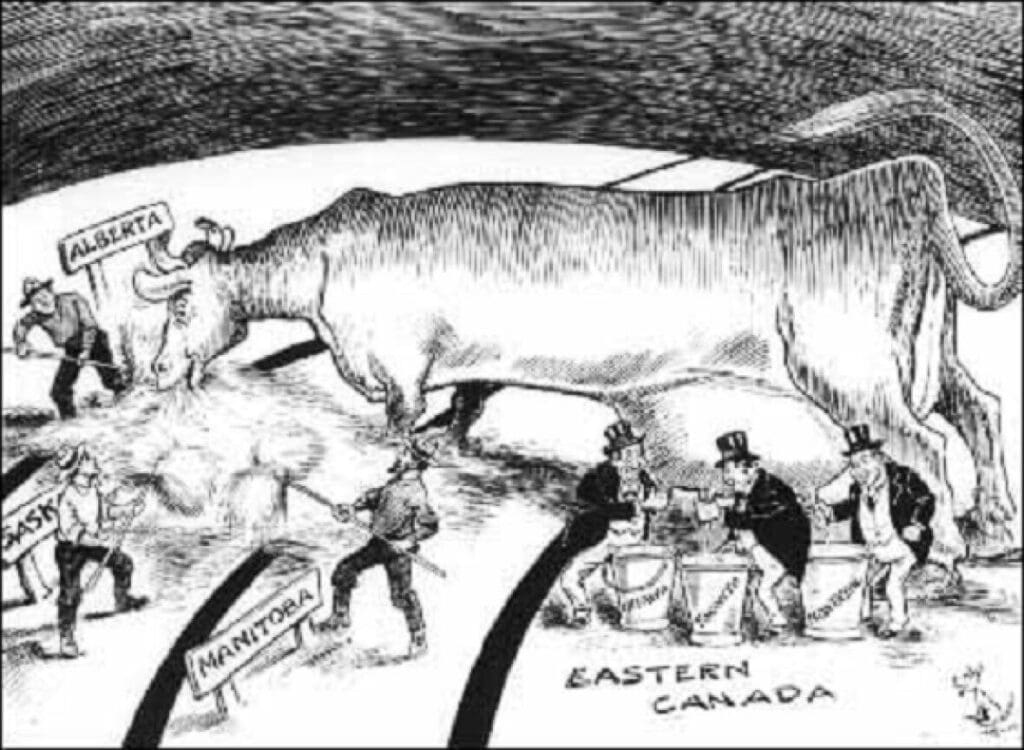
The 1949 Alaska Legislature, in recognition of the popular demand for statehood, created the official Alaska Statehood Committee. It consisted of 11 Alaskans nominated by the governor (Gruening) and approved by the legislature, with no more than 6 belonging to the same party.
The main task of the Alaska Statehood Committee was to publicize and educate the public in Alaska and Outside on what statehood would do. Success of the committee became evident at the 1950 Senate hearings when numerous national groups, fraternal organizations, labor unions, newspaper editors, and even state governors testified in favor of the cause.
Alaskans were fiercely independent, optimistic and determined to come together to make this happen! The fact many Canadians are disgusted with Ottawa could be a motivating factor in joining a newly invigorated USA under Trump.

Events over more than a decade have caused despair for many in Western Canada. A discussion is raging on social media about whether Canadians should continue to be run from the East Coast while resource development of the west supports radical left-wing governance of Team Canada.

The estimated $200 Billion USA pays annually to subsidize Canada is likely to end under Trump, leaving many Canadians to see high value in becoming the state between Alaska and the South 48.

References:
[1] Citizen’s guide to Alaska’s Constitution.
https://akleg.gov/docs/pdf/citizens_guide.pdf
[2] Why Alaska and the Arctic are Critical to the National Security of the United States
https://www.armyupress.army.mil/Journals/Military-Review/English-Edition-Archives/January-February-2018/Why-Alaska-and-the-Arctic-are-Critical-to-the-National-Security-of-the-United-States
[3] Why Trump Wants Greenland And Canada: Strategic And Economic Goals, Garth Friesen, Forbes January 26, 2025
https://www.forbes.com/sites/garthfriesen/2025/01/26/why-trump-wants-greenland-and-canada-strategic-and-economic-goals
[4] Antonson and Hanable,
Alaska’s Heritage, P 279 Alaskans and the United States
[5] Gruening, The State of Alaska
[6] Sen. Mike Gravel, Congress.gov
https://www.congress.gov/member/maurice-gravel/G000388
GRAVEL, Maurice Robert (Mike), a Senator from Alaska; born in Springfield, Hampden County, Mass., May 13, 1930; attended private schools; graduated, Columbia University 1956; member of the United States Army, Counter Intelligence Corps 1951-1954; member, Alaska house of representatives 1962-1966, elected speaker in 1965; author; engaged in real estate development in Anchorage and Kenai; elected as a Democrat to the United States Senate in 1968; reelected in 1974, and served from January 3, 1969, to January 3, 1981; unsuccessful candidate for renomination in 1980; was a resident of Seaside, Calif., until his death on June 26, 2021.
[7] Top Cover for America, John Hale Cloe, January 1, 1987
https://www.amazon.com/Cover-America-Haile-Michael-Monaghan/dp/B000GVLB6K
[8] Nike Site Reflections from the Cold War, DONN LISTON July 27, 2017
https://donnliston.net/2017/07/nike-site-reflections/
[9] Manifest Destiny, Continued: McKinley Defends U.S. Expansionism
https://historymatters.gmu.edu/d/5575/
[10] How USA Exploited Philippines’ Wish for Independence, DONN LISTON, June 6, 2023
[11]The Stampede North: The Alaska Gold Rushes, 1897-1904
https://www.nps.gov/articles/alaska-goldrush-national-historic-landmarks.htm
[12] 37 U.S. Stats. at Large, 512
(1912)
[13] 100 Years of Alaska Legislature, Legislative Affairs Agency
https://akleg.gov/100years/legislature.php?id=-17
[14] Nast, Claus-M., 49 At Last! The Battle for Alaska Statehood, Epicenter Press, 3rd Edition 2009, p90.


